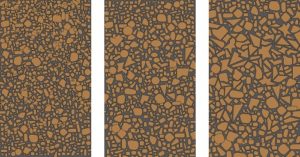Home > Soil > Assessing the soil > Assessment of structure
Assessment of structure
Soil structure plays a key role in soil moisture and oxygen management.
Structure can be assessed through three types of structural elements: crumbly, rounded and sharp-blocky.

Image 1: Crumbly: loose crumbs 0.3 to 1 cm in size. The roots can easily penetrate the crumbs and grow between them.
Image 2: Rounded: these are clods of soil varying in size, from 1 to 10 cm in diameter. The sides are not flat, the corners are rounded. When the clod breaks up, the break surface is not flat and is a different colour from the outside. Roots can easily penetrate this.
Image 3: Sharp-blocky: These clods are compact and angular in shape. The walls are flat. Sharp-blocky structural elements are difficult for roots to penetrate and have few or no pores. If roots grow through them, it is usually via break surfaces.

A good structure has at least 25% crumbly and no sharp-blocky elements.
A moderate structure contains 10-50% sharp-blocky elements, which some roots can still penetrate.
A poor structure exhibits more than 50% sharp-blocky elements, rooting disturbance and/or stagnation of water.
Solution
Poor structure can be prevented by better timing of tillage/driving. Working from fixed row paths also prevents soil compaction. The type of tillage, the depth and the driving speed determine the fineness of the soil and the distribution of organic matter through the tillage layer. Shallow tillage leaves more organic material at the top of the tillage layer. This increases moisture retention capacity and aggregate stability.


